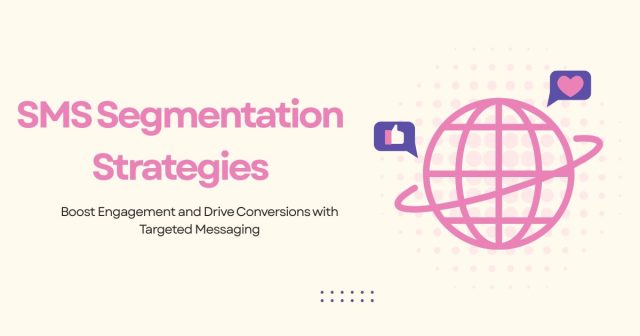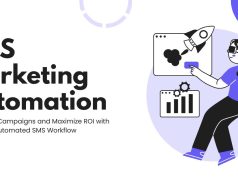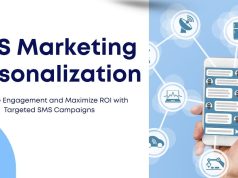SMS marketing remains one of the most powerful direct communication channels for businesses today. With open rates exceeding 90%, text messages can deliver offers, updates, and reminders directly into customers’ hands. However, the days of blasting generic messages to your entire list are over. Modern consumers demand relevance and personalization. This is where SMS segmentation comes into play.
Segmentation refers to dividing a subscriber base into smaller groups based on shared characteristics such as demographics, purchase history, and engagement behavior. When executed correctly, segmentation can dramatically improve open rates, click-through rates, and, ultimately, revenue. In this guide, we will dive into advanced segmentation strategies designed to help marketers craft highly targeted campaigns that resonate with each audience segment. From selecting segmentation criteria and collecting data to automating dynamic message flows, you’ll learn the best practices needed to elevate your SMS marketing efforts and achieve measurable results.
Why Segmentation Matters in SMS Marketing
Segmenting subscribers allows businesses to tailor their messages to specific interests or behaviors. When recipients receive content that directly addresses their needs, they are more likely to take the desired action. For example, sending a product launch alert only to customers who have purchased similar items in the past will yield higher engagement than a blanket announcement.
Furthermore, segmentation reduces the risk of message fatigue and opt-outs. Subscribers who consistently receive irrelevant texts are more likely to unsubscribe. By delivering personalized offers and updates based on user behavior and preferences, you can foster stronger customer relationships and maintain a healthy subscriber list.
Ultimately, targeted campaigns drive better return on investment. Segmentation enables marketers to allocate resources efficiently by focusing on high-value segments and crafting customized workflows for each group. Whether you aim to boost sales, nurture leads, or re-engage dormant customers, a well-defined segmentation strategy is key to maximizing the impact of your SMS marketing efforts.
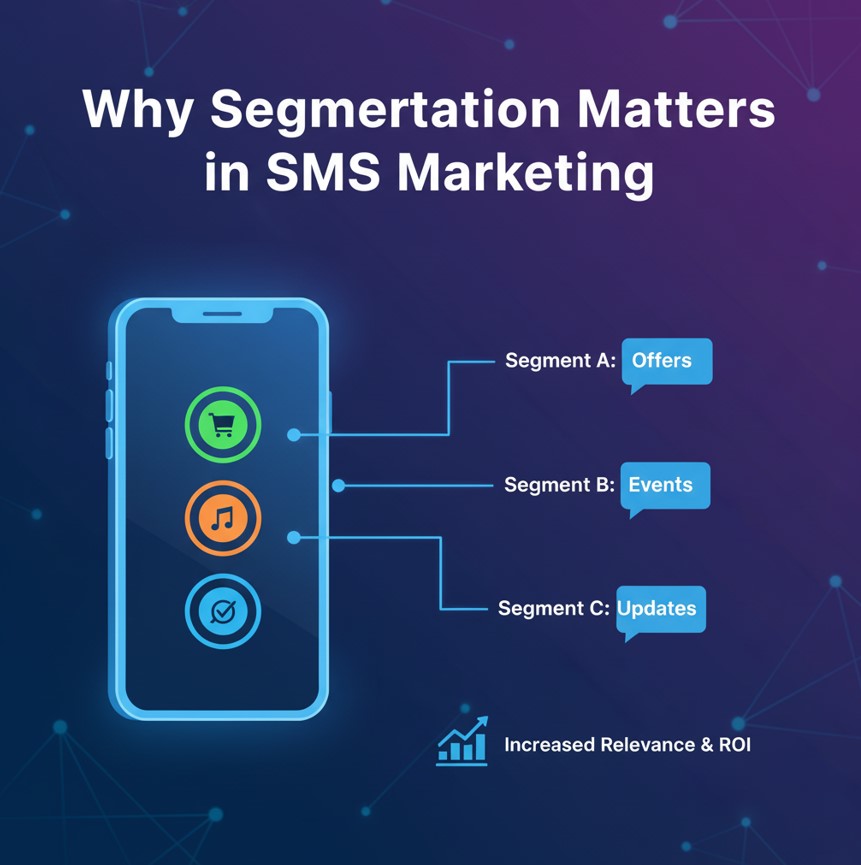
Key Segmentation Criteria
Before you launch your campaigns, identify the attributes you will use to segment your audience. Below are four advanced criteria to consider:
- Demographics: Divide subscribers by age, gender, location, or job title. This allows you to target promotions based on life stage or geographic factors. For instance, run a Mother’s Day campaign only to female subscribers aged 25–45 in urban areas. Explore further refinements like life events and income brackets to drive even deeper personalization.
- Behavioral Data: Track actions such as click-throughs, previous campaign responses, website visits, or in-app activities. By mapping subscriber interactions with your brand, you can identify patterns and preferences. For example, users who frequently engage with product tutorials may be more receptive to educational offers or bundle deals. Use behavior triggers to automatically send messages when specific events occur, such as viewing a new product or requesting a demo.
- Engagement Level: Not all subscribers are equally active. Categorize your list into hot leads who recently interacted, warm leads with sporadic engagement, and cold leads who haven’t opened messages in months. Tailor re-engagement campaigns specifically for cold segments with exclusive incentives or surveys to rekindle interest. Meanwhile, reward your most engaged segments with loyalty bonuses or early-access previews to maintain momentum.
- Purchase History: Your customers’ transaction data is a goldmine for segmentation. Group subscribers by one-time purchasers, repeat buyers, high-value spenders, or cart abandoners. Use this data to send complementary product recommendations, discount codes for cyclical purchases, or reminders to refill consumable products. Abandoned cart messages, for example, can recover lost sales by addressing stock availability or offering limited-time discounts.
Collecting and Analyzing Customer Data
To segment effectively, you need accurate data. Begin by integrating your SMS platform with your CRM, e-commerce store, or marketing automation tools to capture customer attributes such as name, location, purchase history, and behavioral events. Ensure your data pipeline updates in real time so segmentation based on recent interactions remains current.
Implement pop-up forms, web chat triggers, or SMS opt-in flows to gather additional information. For example, run a short survey via SMS to collect preferences in product categories or communication frequency. Incentivize data sharing with exclusive discounts or entry into a giveaway to increase participation rates.
Once you have collected the data, analyze it to spot high-impact segments. Use analytics dashboards to visualize trends in engagement, conversion rates, and average order values by segment. Identify underperforming segments and brainstorm tailored messaging strategies. Cleaning your database is also crucial: regularly remove invalid, inactive, or duplicate numbers to maintain deliverability and compliance.

Building Segmented SMS Lists
After defining your criteria and gathering data, the next step is to build segmented lists. Most SMS marketing platforms provide dynamic list management. Set up rules that automatically assign subscribers to segments based on predefined attributes or tags. For example, create a segment called High-Value Customers for anyone whose total spend exceeds a certain threshold.
Use tag-based segmentation for ad hoc grouping. When a customer downloads a specific e-book, applies a promo code, or attends a webinar, assign a tag and trigger a follow-up SMS sequence tailored to that action. Tag-based workflows allow marketers to be agile and respond to on-the-fly events without altering the core database.
Remember to limit the number of segments to those with clear business objectives. Over-segmentation can lead to complex workflows that are hard to manage. Aim for a balance between relevance and scalability by grouping similar criteria into broader buckets where necessary.
Crafting Personalized Messages
Once your segments are in place, crafting the message content is critical. Start with a compelling opening line that uses the subscriber’s name and acknowledges their interests. For instance, Hi Sarah! As a frequent bookstore shopper, we thought you’d love our new mystery arrivals…
Leverage dynamic content blocks to showcase different offers based on segment attributes. High-value customers might receive an exclusive VIP discount code, while cart abandoners get a reminder with a small incentive. Keep your copy concise and action-oriented, with a clear call to action such as Shop Now or Redeem Offer.
Personalization goes beyond names. Incorporate context like recent purchase dates or product categories viewed. For example, It’s been a month since your last skincare order—restock now with 15% off! Test different copy elements such as urgency, emojis, tone, and call-to-action placement. A/B test message variations within each segment to identify what resonates best. Pay attention to message length: 160 characters or fewer ensure standard SMS delivery without additional segments.
Automating Segmented Campaigns
Automation is key to scaling personalized SMS campaigns. With segmented lists and message templates ready, set up automated workflows that trigger based on events or schedules. For example, a welcome series for new subscribers can start immediately after opt-in, walk them through brand highlights, and end with a special discount.
Use time-based automations for recurring promotions, such as loyalty reminders sent 30 days after a purchase or birthday messages on the subscriber’s special day. Event-based automations can react to behaviors like website visits, app downloads, or location-based triggers when subscribers enter a specific geofence.
Ensure your automation platform supports conditional branching. This allows you to design complex workflows where subscribers move between paths depending on their actions—such as clicking a link or using a promo code. Also, maintain a suppression list to avoid sending duplicate or irrelevant messages. Implement frequency capping to limit the number of messages per day or week, keeping your SMS marketing respectful and subscriber-friendly.
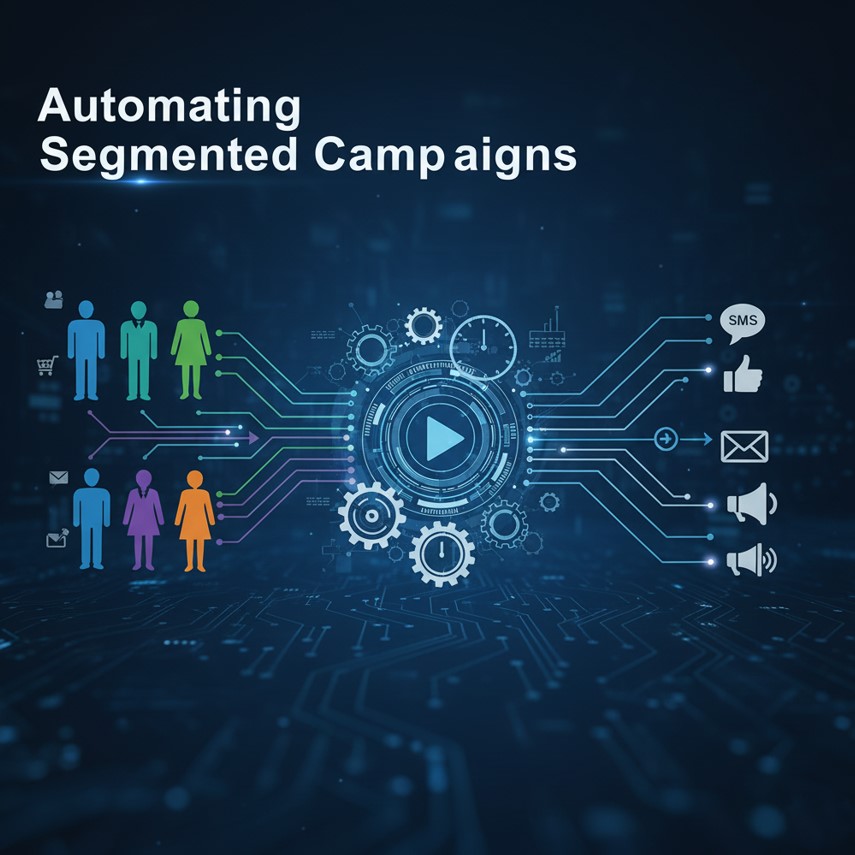
Best Practices and Compliance
SMS marketing is regulated by laws such as TCPA in the US and GDPR in Europe. Always obtain express consent before sending messages. Provide clear opt-out instructions in every SMS, like Reply STOP to unsubscribe. Maintain records of consent timestamps and opt-in sources.
Keep sending frequency under control—no more than two to three messages per week unless subscribers have explicitly requested higher cadence. Respect local time zones and avoid messaging during odd hours. Monitor deliverability by watching bounce rates and carrier filters to ensure your campaigns reach the intended audience.
Maintain an up-to-date privacy policy and terms of service that outline your SMS practices. Training your team on compliance requirements and auditing your processes regularly will safeguard your brand reputation and minimize legal risks.
Measuring Success and Optimization
Track key metrics for each segment, including open rates, click-through rates, conversion rates, and unsubscribe rates. Compare performance across segments to identify top-performing groups and those needing improvement.
Use revenue attribution models to understand the true impact of your SMS campaigns. Tie sales directly back to specific message sends to justify your ROI. Analyze metrics at different levels—message, segment, and campaign—to spot patterns and optimize accordingly.
Implement a continuous testing framework. Conduct A/B tests on subject lines (first 3–5 words of the SMS preview), send-times, copy length, call-to-action placement, and offer types. Document your results and integrate winning variations into your mainline campaigns. Leverage attribution reporting within your SMS platform or integrate with your analytics suite to gain end-to-end visibility into customer journeys. Combine SMS data with email, social, and web analytics to create a holistic view of cross-channel performance.

Real-World Example
Sunshine Coffee Roasters, a mid-sized e-commerce coffee retailer, implemented advanced SMS segmentation to increase repeat purchases. They started by dividing their subscribers into first-time buyers, repeat customers, and lapsed customers who hadn’t purchased in 90 days. For first-time buyers, they sent a post-purchase nurture series with brewing tips and product recommendations. Repeat customers received loyalty points updates and exclusive new roast previews. Lapsed customers got a We miss you offer with a time-sensitive discount.
Within two months, open rates averaged 92% and click-through rates improved by 45% compared to their non-segmented blasts. Repeat purchase rate rose by 30%, and lapsed customer reactivation climbed by 25%. By automating these workflows and continuously refining segment definitions based on performance data, Sunshine Coffee Roasters achieved a 3x ROI on their SMS marketing investment.
Conclusion and Next Steps
Effective segmentation transforms SMS marketing from a broadcast tool into a personalized communication channel. By leveraging customer data, defining precise criteria, and automating targeted workflows, you can deliver relevant messages that resonate with each audience segment. Start by auditing your existing data sources, choosing three to five high-impact segments, and crafting dedicated message templates.
Pilot small-scale campaigns, measure performance, and iterate based on real-world results. As you gain insights, expand your segmentation strategy and integrate advanced features like dynamic content, conditional branching, and AI-driven personalization. Remember to stay compliant with SMS regulations and respect subscriber preferences.
With a robust segmentation framework in place, your SMS marketing efforts will not only drive higher engagement and conversions but also foster long-term customer loyalty. Begin experimenting with your first advanced segment today and watch your SMS ROI soar.


